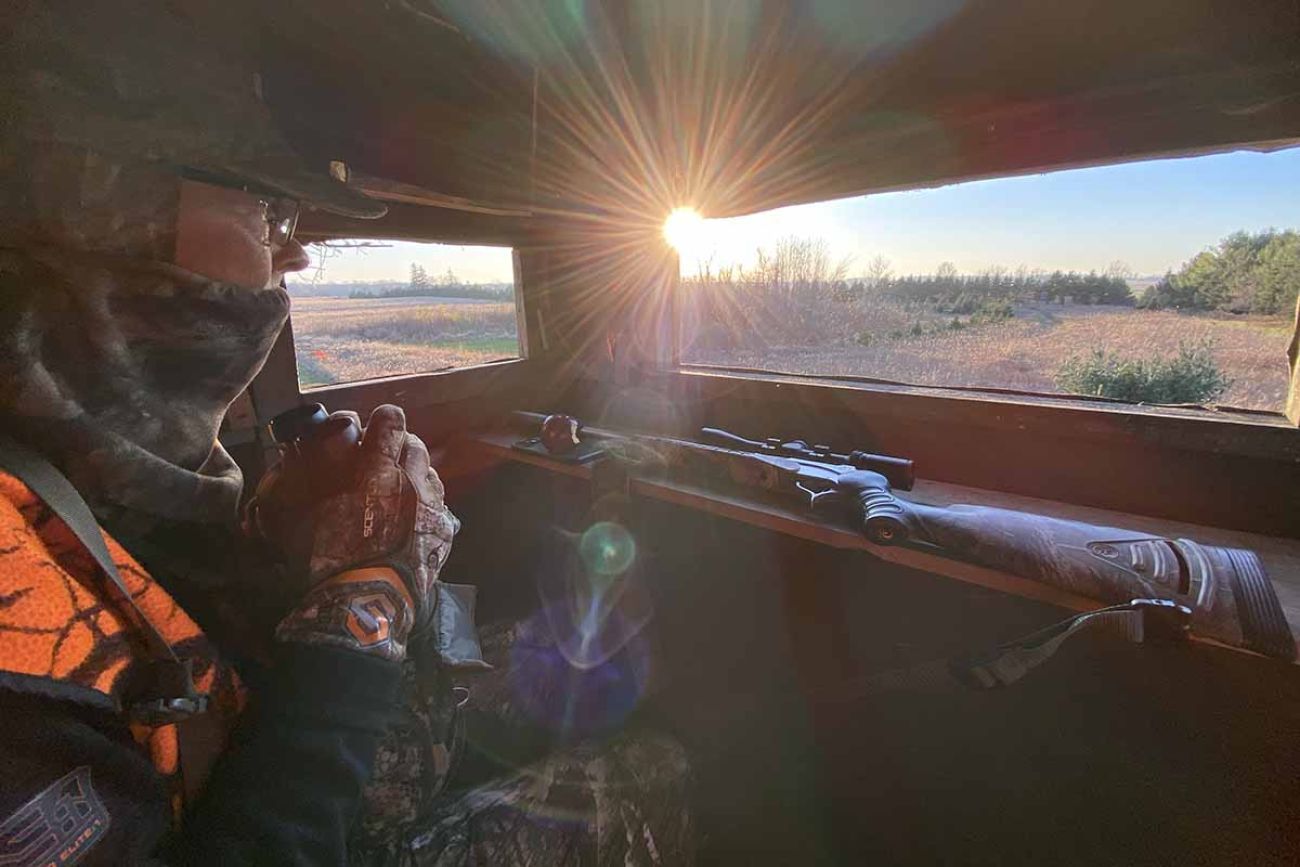As deer ravage suburbs, Michigan urges hunters: Do your part, shoot a doe

- Michigan has a deer overpopulation problem, as hunting numbers decline
- Michigan is the only Great Lakes state where hunters kill more bucks than does, and it’s contributing to overpopulation
- New regulations this fall make it easier for hunters to target does, but it may not be enough to reverse population trends
As Michigan’s popular whitetail deer firearm season approaches next month, state officials are urging hunters to shoot does to curb populations tweaking regulations to encourage it.
The Michigan Department of Natural Resources sent out an alert encouraging antlerless deer kills, saying they’re needed across much of the Lower Peninsula” to cull herds that are causing car crashes, spreading disease and destroying farmers’ crops.
While Michiganders can legally hunt deer from September through January, the majority of kills are during the state’s regular firearm season from Nov. 15 to 30.
“Managing deer numbers effectively is crucial for ecosystem health, agricultural interests and the balance of natural predators,” the state DNR said in its alert.
Bridge Michigan spoke with Chad Fedewa, the acting DNR deer, elk and moose management specialist, about the issue.
Here’s what to know:
Lower Peninsula populations surging
State officials estimate there may be 2 million deer in Michigan today. That’s twice as many as in the 1940s, when species managers already saw overpopulation as a problem.
Related:
- As hunting wanes, fear of a southern Michigan deer invasion grows
- Five reasons why Michigan deer herds are surging: hunting declines are just one
- Archery deer-hunting season in Michigan. What to know: Dates, licenses
- In antler-obsessed Michigan, the state begs hunters to shoot more does
Most of those deer are clustered in the southern Lower Peninsula near the state’s human populations. (In the Upper Peninsula, population trends are more complex and some hunters argue there are not enough deer.)
Telltale signs of overpopulation are forests where the vegetation on every tree starts about 6 feet off the ground. The phenomenon, called a browse line, comes from deer devouring all of the branches within their reach.
“if you see that,” Fedewa said, “it’s a pretty good indication there are too many deer in that particular area, that the habitat can't support.”
Several factors are fueling the Lower Michigan deer population explosion.
- Hunting is growing less popular. There were 527,000 hunters in the woods last year, about 270,000 fewer than there were in the late 1990s. That means fewer deer get killed each year.
- Sprawl: Suburbanization has given deer plenty of backyard gardens to munch, while putting them safely out of reach of hunters. And climate change has made it easier for deer to survive the winter.
- Buck fever: Michigan hunters kill 1.3 bucks for every doe, a higher ratio than hunters in any other Great Lakes state. State deer biologists say keeping populations stable would require Michigan hunters to kill tens of thousands more does every year.
In general, Fedewa said, hunters could kill 35% to 40% of the deer on the landscape every fall without putting a dent in the year-to-year population size.
“If you’re looking to reduce populations,” he said, “you need to go above that number.”
New regulations
Some states have successfully thinned deer herds by forcing hunters to kill more does.
In Wisconsin, a short-lived “earn a buck” program required hunters to kill an antlerless deer before they could target a buck. Other states have an “earn a second buck” program.
So far, Michigan regulators have focused on expanding opportunities to shoot antlerless deer.
Changes for the 2024-25 deer season include:
- Extending the urban archery season into several counties. The season, which runs Jan. 1 to Jan. 31, previously only existed in Wayne, Macomb and Oakland counties. Now, Huron, Kent, Lapeer, Sanilac, Tuscola, Washtenaw and most of St. Clair counties have been added to the list.
- Expanding the types of firearms hunters can possess. In the Lower Peninsula, the longstanding muzzleloading season is now open for all legal firearms, not just muzzleloaders.
- Expanding hunting opportunities: The early and late antlerless firearms seasons, which take place in late September and late December and have formerly been confined to private land, are now open to both public and private lands. In addition, a special extended late antlerless season has been created across the southern Lower Peninsula, adding nearly two weeks of hunting opportunity from Jan. 2 to Jan. 12.
- A new discounted antlerless license is available for $5 per license.
The DNR has also adjusted UP deer hunting regulations to deal with growing populations in some areas and stagnant populations in others. Those regulations can be found here.
Time will tell whether those changes are enough to ease Michigan’s overpopulation problem.
Michigan regulators have been liberalizing deer regulations for years in hopes that hunters will kill more deer, to little effect.
Even before this season’s changes, the average Lower Peninsula hunter was allowed to shoot up to 12 deer annually, so long as 10 of them are antlerless.
“We didn’t really see a big response in the number of animals harvested,” Fedewa said.
Most hunters have no use for that much meat, so they simply shoot one or two deer and call it a season.
Michigan Environment Watch
Michigan Environment Watch examines how public policy, industry, and other factors interact with the state’s trove of natural resources.
- See full coverage
- Subscribe
- Share tips and questions with Bridge environment reporter Kelly House
Michigan Environment Watch is made possible by generous financial support from:
Our generous Environment Watch underwriters encourage Bridge Michigan readers to also support civic journalism by becoming Bridge members. Please consider joining today.
See what new members are saying about why they donated to Bridge Michigan:
- “In order for this information to be accurate and unbiased it must be underwritten by its readers, not by special interests.” - Larry S.
- “Not many other media sources report on the topics Bridge does.” - Susan B.
- “Your journalism is outstanding and rare these days.” - Mark S.
If you want to ensure the future of nonpartisan, nonprofit Michigan journalism, please become a member today. You, too, will be asked why you donated and maybe we'll feature your quote next time!






